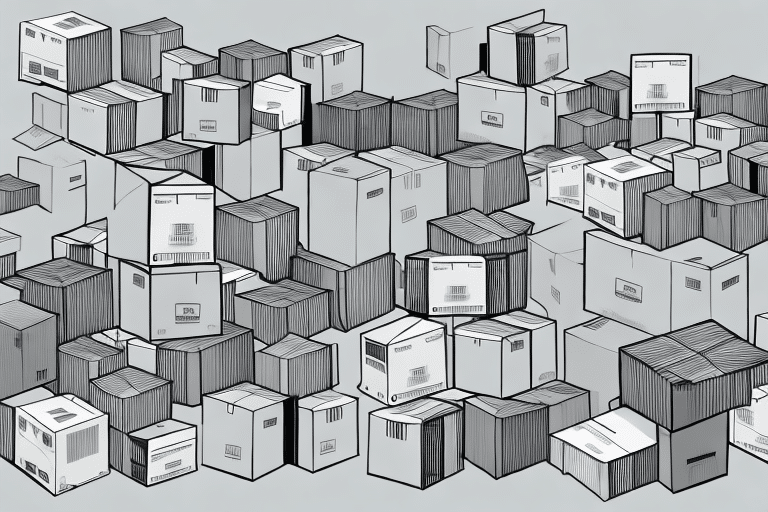Understanding Amazon FBA Pricing: A Comprehensive Guide
As an Amazon seller, navigating the complexities of Fulfillment by Amazon (FBA) pricing is crucial for maximizing profitability. This guide delves into the various factors influencing FBA costs, methods to calculate fees, and strategies to optimize your pricing strategy effectively.
1. What is Amazon FBA?
Amazon FBA is a service that enables sellers to store their products in Amazon's fulfillment centers. Amazon handles the logistics, including picking, packing, and shipping products to customers, thereby enhancing delivery speed and customer satisfaction.
Benefits of Using Amazon FBA
- Wider Reach: Access to Amazon’s extensive customer base and Amazon Prime eligible customers.
- Improved Customer Experience: Faster shipping times and reliable delivery services.
- Scalability: Easily scale your business without worrying about logistics.
According to Statista, Amazon's fulfillment network has been expanding, making FBA an increasingly attractive option for sellers aiming to scale their businesses.
2. How Does Amazon FBA Pricing Work?
Amazon FBA pricing consists of two primary categories:
- Fulfillment Fees: Charged for picking, packing, and shipping your products.
- Storage Fees: Incurred for storing your inventory in Amazon's warehouses.
Understanding these fees is essential for setting competitive prices and maintaining healthy profit margins.
Fulfillment Fees
Fulfillment fees are determined by the size and weight of your product. For example, standard-size items typically incur lower fees compared to oversized items. Detailed pricing information can be found on Amazon's FBA Fee Structure.
Storage Fees
Storage fees vary based on the volume (measured in cubic feet) your inventory occupies and the time of year. During peak seasons, such as Q4, storage fees can be higher due to increased demand for warehouse space.
3. Factors That Affect Amazon FBA Pricing
Several factors influence the overall cost of using Amazon FBA:
- Product Size and Weight: Heavier and larger products incur higher fulfillment fees.
- Product Category: Certain categories may have different fee structures.
- Storage Duration: Long-term storage can lead to additional fees.
- Seasonality: Peak seasons may result in increased storage and fulfillment costs.
- Competition: High competition can influence pricing strategies.
Impact of Competition
In highly competitive categories, sellers may need to adjust their prices to remain competitive. Monitoring competitors' pricing strategies is crucial for maintaining market positioning.
4. Calculating Amazon FBA Fees
Accurately calculating FBA fees is essential for determining your product's profitability. Amazon provides an FBA Revenue Calculator to help sellers estimate their fees based on product dimensions, weight, and category.
Using the FBA Revenue Calculator
The calculator breaks down fees into categories such as:
- Fulfillment Fees: Based on size and weight.
- Monthly Storage Fees: Based on the volume of inventory stored.
Regularly using this tool can help you adjust your pricing to maintain profitability, especially during high-demand periods.
Storage Fees Explained
Amazon charges monthly storage fees based on the amount of space your inventory occupies. Additionally, long-term storage fees apply to products stored for more than six months. To minimize these costs, consider strategies like optimizing inventory levels and removing slow-moving items.
5. Strategies to Optimize and Reduce FBA Costs
Implementing effective strategies can help you reduce FBA costs and increase your profit margins:
- Optimize Product Listings: High-quality listings reduce returns and customer complaints, lowering fulfillment costs.
- Increase Inventory Turnover: Faster turnover reduces storage fees.
- Utilize Amazon’s Multi-Channel Fulfillment: Consolidate shipments to save on shipping costs.
- Leverage Bundled Fulfillment: Combine products to save on shipping expenses.
Referral Fee Discounts
Amazon offers referral fee discounts to sellers who meet specific criteria, such as selling in particular categories or utilizing Amazon’s advertising services. These discounts can significantly reduce your overall fees.
FBA Small and Light Program
The FBA Small and Light program is designed for small, lightweight items, offering reduced fees for products under 12 ounces and priced below $15. This can be a cost-effective option for qualifying products.
6. Shipping Products to Amazon FBA Warehouses: Best Practices
Efficiently shipping your products to FBA warehouses can save both time and money. Follow these best practices:
- Proper Labeling: Ensure all products are labeled according to Amazon's guidelines to avoid delays.
- Secure Packaging: Use appropriate packaging materials to prevent damage during transit.
- Consolidate Shipments: Reduce shipping costs by sending bulk shipments rather than multiple small ones.
Compliance with Amazon’s Policies
Ensure your products comply with Amazon’s policies, including restrictions on certain categories and adherence to safety and quality standards. Non-compliance can result in additional fees or removal of your products from the marketplace.
7. Optimizing Your Amazon FBA Pricing Strategy for Profitability
To maximize profitability, it's essential to develop a pricing strategy that accounts for all costs and market conditions:
- Analyze Costs: Include product costs, shipping, storage, and other FBA fees to determine your break-even point.
- Monitor Sales: Regularly track sales data to adjust prices based on demand and competition.
- Adjust for Seasonality: Increase prices during peak seasons to capitalize on higher demand.
Competitive Pricing Strategies
Instead of engaging in price wars, focus on offering unique value propositions such as superior customer service or faster shipping. This differentiation can justify higher prices and maintain healthy profit margins.
8. Common Mistakes to Avoid While Pricing Your Products on Amazon FBA
To ensure success on Amazon FBA, avoid these common pricing mistakes:
- Ignoring All Costs: Failing to account for all fees can lead to reduced profit margins.
- Neglecting Competitor Prices: Not monitoring competitors can result in overpriced or underpriced listings.
- Setting Prices Too Low: Extremely low prices can erode profits and devalue your products.
By avoiding these pitfalls, you can set competitive and profitable prices for your products.
9. Frequently Asked Questions About Amazon FBA Pricing
- What is the difference between FBA fees and FBM fees? FBA fees cover fulfillment and storage handled by Amazon, while FBM fees are managed by the seller, including shipping and customer service.
- Do I need to pay storage fees for all my products? Yes, storage fees apply to all inventory stored in Amazon’s fulfillment centers, with additional fees for long-term storage.
- What is the shipping process for FBA? Sellers ship their products to Amazon’s warehouses, where Amazon handles storage, picking, packing, and shipping to customers.
10. Comparing Amazon FBA Pricing with Other E-Commerce Fulfillment Options
When deciding on a fulfillment method, it’s essential to compare FBA with other options:
- Fulfillment by Merchant (FBM): Sellers handle storage, packing, and shipping, which can be cheaper but more labor-intensive.
- Dropshipping: Products are shipped directly from suppliers to customers, eliminating the need for inventory storage.
- In-House Fulfillment: Managing your own warehouses and logistics, offering complete control but requiring significant investment.
Each option has its advantages and drawbacks, so choose the one that aligns best with your business model and budget.
11. The Benefits and Drawbacks of Using Amazon FBA for Your Business
Amazon FBA offers numerous benefits, including streamlined logistics, access to Prime customers, and enhanced scalability. However, it also comes with drawbacks such as high fees and less control over inventory management.
- Benefits: Faster delivery, reduced logistical burden, access to a vast customer base.
- Drawbacks: High fulfillment and storage fees, potential inventory restrictions.
Sellers must weigh these factors to determine if FBA is the right choice for their business.
12. Understanding the Impact of Taxes on Your Amazon FBA Pricing
Taxes can significantly affect your FBA pricing strategy. Sales tax requirements vary by state, and improper handling can lead to compliance issues. It's advisable to consult with a tax professional to navigate the complexities of tax regulations and ensure compliance.
- State Sales Taxes: Different states have varying sales tax rates and requirements.
- Marketplace Facilitator Laws: Some states require Amazon to collect and remit sales tax on behalf of sellers.
Stay informed about tax laws that impact your business to avoid unexpected liabilities.
Conclusion
Amazon FBA Pricing is a multifaceted aspect of selling on Amazon that requires careful analysis and strategic planning. By understanding the various fees, factors influencing costs, and implementing effective strategies to optimize pricing, sellers can enhance their profitability and achieve long-term success on the platform.








